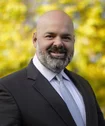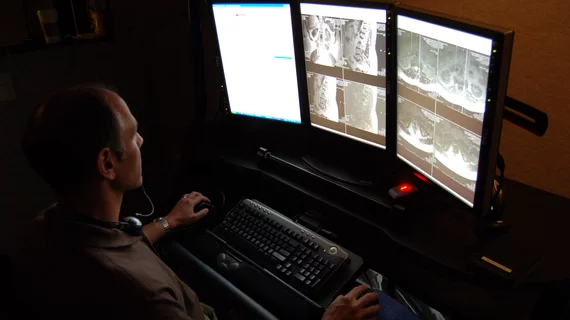Nation’s largest teleradiology groups struggle to take on new business amid surging demand
It’s a question many imaging leaders are likely asking themselves amid staffing shortages and rising exam volumes: Is the nation’s largest teleradiology group accepting new business?
That was the case for Reno Radiological Associates, an independent, physician-owned practice that has been around since 1947. The largest radiology group in northern Nevada, RRA has seen volumes “climb incessantly” in recent years, said CEO Anthony Dispenziere. He recently wanted to seek out teleradiology help to “decompress our rads,” but early efforts have not yielded much progress.
Meanwhile, there are no fellowship programs in the state from which to hire, and the practice has recently lost several providers due to both teleradiology and retirement. Dispenziere reached out to vRad—the largest teleradiology provider in the U.S., with 500 physicians on-hand—and said he was told over the phone that the company had implemented a “national new business freeze.”
“High-volume nights and weekends are the hardest to cover, and a quality telerad service appears quite difficult to find,” Dispenziere told Radiology Business.
“It has probably never been harder to work in radiology at any point in history with the single possible exception of when they first invented the X-ray, and the inventor was subjected to harmful radiation,” he added.
Eden Prairie, Minnesota-based vRad—which is part of the larger California-headquartered Radiology Partners—would not confirm or deny whether it has implemented a new business freeze. A spokesman shared a statement on Aug. 7 and declined to answer further questions.
“VRad continues to grow, prioritizing increased volume across existing partnerships, especially throughout a high-demand summer, as we have seen record year-over-year volume growth,” the company told Radiology Business. “As always, patient care is our priority, and our team of more than 500 radiologists continues to provide quality patient care and excellent client service during a time when there is an increased demand and limited supply of radiologists—a challenge all radiology practices face in today’s market.”
Not alone
Reno Radiological Associates is not alone. A recent Radiology Business Management Association poll found that about 69% of member respondents have had to ask hospital administration for financial support associated with providing ED coverage on nights and weekends. Another 71% reported having to pay a salary differential for shifts that occur between 5 p.m. and 7 a.m.
"With the manpower crisis in radiology, groups are having a difficult time finding adequate coverage for nights and weekends," Linda Wilgus, MBA, RBMA co-executive director, told Radiology Business.

“It has probably never been harder to work in radiology at any point in history..."
Anthony Dispenziere, CEO, Reno Radiological Associates
Alaska-based radiologist Ned Holman, MD, said he also recently reached out to vRad for a quote and was told by a sales rep “they weren’t taking on any new contracts in 2024.”
Other members of the specialty responded to his original message on X (formerly Twitter).
“This is not a vRad issue or a Rad Partners issue. Other companies are also having difficulty servicing overnight contracts. The volumes have gone up and many hospitals are not understanding how hard it is to recruit right now,” wrote Tarang Patel, MD, a podcaster and Banner University Medical Center physician based in Arizona.
“It's a RP issue IMO. Smaller telerad firms with less overhead/debt can pay $40-$45/wRVU while RP vRad/Matrix may be in the high $20s or low $30s. I say this as someone who just recruited 5 swing/night rads. It's all about what you can pay and meeting market demand. The rads exist,” Holman responded.
“Don’t get me wrong pay, of course, is part of it. But even with higher pay, volumes are rising faster. That said, I assume they are dropping their lower paying clients so they can better service their higher paying ones,” wrote Patel in response to claims from Holman that vRad had dropped other groups in Alaska.
“Yes, whereas radiologists’ value is rising faster than federal reimbursement, I suspect a number of groups are finding that arbitrage difficult,” added Seth M. Hardy, MD, MBA, an abdominal specialist based in Pennsylvania.
Holman and Alaska Imaging determined that it was more cost effective to hire nighthawks internally versus contracting with an outside teleradiology firm. With the latter, he believes it is more difficult to control turnaround times and quality.
Dispenziere continues to contact other teleradiology providers seeking help, but he is not optimistic.
“I’ve reached out to my senator to try to get her attention about the challenges our industry is facing,” he told Radiology Business.
He believes the only immediate answer to the industry’s shortage is to facilitate more physician immigration with an easier, expedited J1-type process. “But I have little faith in the government achieving something like that.” Others such as the American College of Radiology have suggested adding more residency slots.
“That’s no quick fix, and I think we will see hospitals close due to the lack of physician staffing,” he said. “More groups folding. I think many are hanging on by their fingernails.”
There are currently three hospitals in Reno Radiological Associates’ immediate service area. One is down to fewer than four radiologists, and the other has about six, all near retirement age. “We are the biggest group by far, and we are all struggling with staffing.”
StatRad also faces heavy demand
Dispenziere also reached out to StatRad, which advertises itself as the second largest teleradiology group in the U.S. He said Monday that the San Diego-based group could begin onboarding Reno Radiological Associates in about 12 months. Two other telerad groups have not yet returned his calls, while a third said they are not accepting new night work. An India-based firm responded immediately, but that raises concerns with ABR certification, Dispenziere said.
StatRad has faced some of the same problems as vRad and others in this space, said President and CEO Claude Hooton, MBA. Imaging volumes continue to increase annually, and the number of providers has “significantly contracted” in the 10 years he’s been at StatRad. This has driven up demand for some of the leading firms.
Further complicating matters, several teleradiology providers were purchased and consolidated in recent years, and “many of the combinations were not successful.” Others have gone out of business due to the increased complexity required to provide teleradiology services, he added.

"Almost all of our clients, primarily radiology groups, are struggling to remain viable with their increasing recruiting challenges."
Claude Hooton, MBA, president and CEO, StatRad
“While the rad shortage is the most impactful issue, the IT requirements have also become dramatically more challenging. As the industry has transitioned to providing final reads, the HL7 interface support, payer credentialing and time to read have made it more difficult to provide service,” Hooton told Radiology Business by email. “Furthermore, firms in our space must have a strategic focus on cybersecurity that was not necessary even 5-7 years ago. All of this requires investment in technology and specialized personnel.”
These considerations contributed to StatRad’s decision to sell to Australia-based I-MED, a deal that was finalized July 1. Client requests in August remain at an “all time high” for providers like StatRad and vRad, Hooton said.
“Exacerbating the issue is the fact that almost all of our clients, primarily radiology groups, are struggling to remain viable with their increasing recruiting challenges. Many of our clients would like us to take on more hours, especially on weekends,” he said.
Recruiting has remained strong, with StatRad interviewing about 400 physicians in 2023 and bringing aboard about 5%. The company “will always speak with any potential client to determine if they may be a fit as a partner.” But top priority in such conversations is the ability to maintain quality and turnaround times.
“Becoming a new client typically requires a longer waiting period than they would like to go-live. These lead times are primarily driven by radiologist staffing needs and increased delays in credentialing and licensing that have still not recovered from the impacts of the COVID pandemic,” Hooton said.

